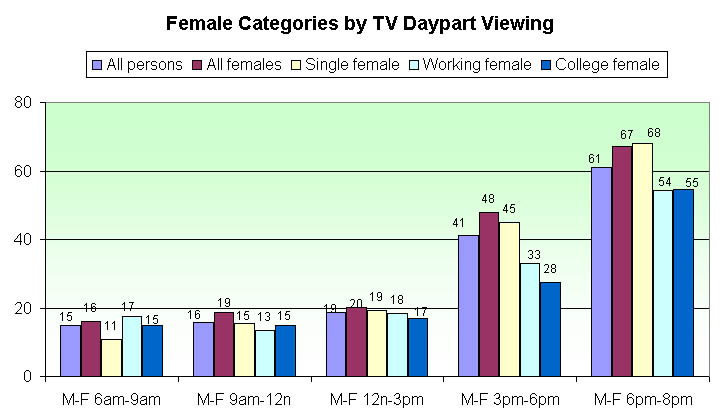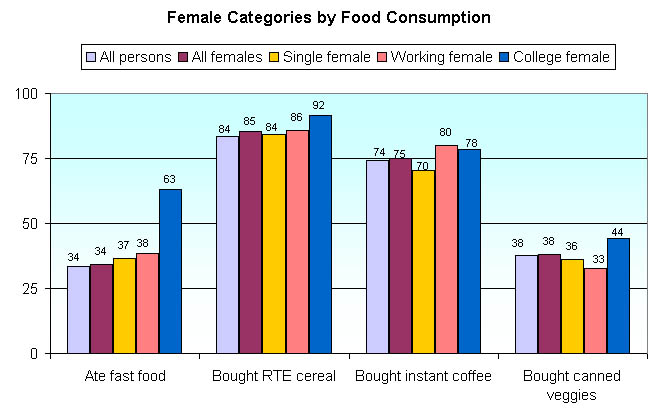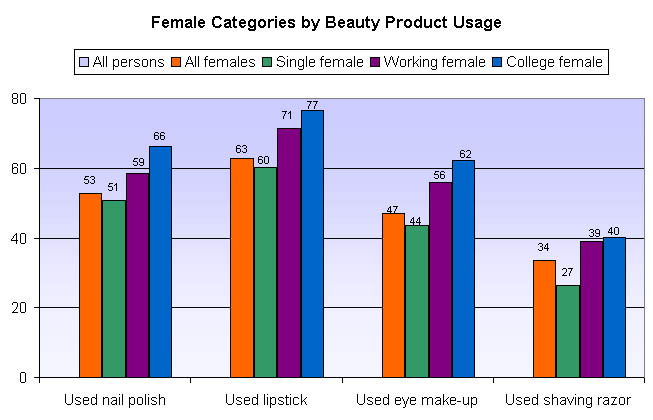
(Source: TGI Mexico)
Modern Mexican Women
The following article by Gretchen Peters appeared in the Christian Science Monitor on February 18, 2003
Shock jock rails against Mexico's modern womenRadio talk-show host Oscar Muzquiz is searching for "La Fodonga del Año," or "The Female Slob of the Year."
On "Educating Your Woman," broadcast daily from this industrial northern city, husbands are invited to enroll their wives in the contest if they: sleep until 9 a.m., serve only packaged foods, watch TV all day, and rarely shave their legs
"This is not life - living with someone who has become your greatest enemy," Mr. Muzquiz admonishes his male listeners. "Wake up, rise up ... and change your life!"
If Muzquiz sounds like Howard Stern in a sombrero, that's because, in part, he is. In addition to targeting the lazy housewife, Muzquiz crusades against "shameless" women who live independently, marry late, and work outside the home.
Social and economic changes in Mexico over the past three decades - from the increasing number of working women to the explosion of supermarkets, which cater to a rushed lifestyle - have transformed family culture here and left many men struggling to redefine their roles. Muzquiz's radio show is just one example of a country twitching as it witnesses a shift - some say the "Americanization" - of its family values"
Men across Mexico are violently resisting this change," says Lourdes Plata Toledo, a well-known psychologist who counsels couples in a column in the Monterrey newspaper El Norte. "More women are saying, 'I don't need a man to support me. I don't need a man to fulfill me,' and men are thrown by this."
...
To get an idea what these modern Mexican women are like, we will cite some survey data from the TGI Mexico study. This is a survey of 6,200 persons between the ages of 12 to 64 years old who live in the 27 major Mexican cities (of population 400,000+), with the interviews being conducted during the first half of 2002. Of these survey respondents, 3,406 were females (weighted to 50.4% of all persons). Of the females, 33.7% are single (that is, never married before), 18.9% are currently employed and 8.7% have college degrees. These would be the classes of women who were characterized as 'shameless' by the radio program host in the fourth paragraph of the story.
In the next chart, we show the distribution of these categories by socio-economic level. The definition of these socio-economic levels follow the national system, whereupon people are classified into the classes known as AB, C, C+, D+ and DE. Within the general population, the percentages of these categories are 6.2%, 11.7%, 17.7%, 35.9% and 28.4%. Within all females, the percentages are about the same. But as soon as we get to single females, we see that they are slightly more likely to be upscale. The likelihood increases significantly for working females. And for female college graduates, they were almost surely upper- and middle-class. So the first conclusion that we can draw is: if being single, employed and educated is a lifestyle choice, then it is tied in with better socio-economic circumstances.

(Source: TGI Mexico)
In the next chart, we show the female categories by those people who watch television during certain weekday dayparts. As a whole, women watch slightly more television than men and this is practically a universal phenomenon. But what we find here is that the television viewing audience has fewer working females and fewer female college workers. Understandably, some of these women are too busy being economically active to sit around and watch television.

(Source: TGI Mexico)
In the next chart, we show the female categories by food consumption. With distinction, the female college graduates are more likely to patronize fast food establishments as well as purchase instant ready-to-eat foods and canned food. Likewise for the working females. The case of single women is somewhat different, because this category in fact contains women of all ages (that is, the 12 year old girl as well as the 64 year old grandmother). But the story that is drawn out here is not that these professional working women and educated women are negligent. Once upon a time, it may have been a symbol of honor for the housewife to spend a third of her day on grinding corn by hand to make tortillas (see Jeffrey M. Pilcher's ¡Que vivan los tamales!: Food and the Making of Mexican Identity). Today, that form of labor is recognized to be both unproductive and oppressive, both at the personal level as well as the collective level (that is, think about the contribution of that labor towards the gross domestic product). And the same can in fact be said about all the mass-produced goods that have displaced traditional handicrafts.

(Source: TGI Mexico)
In the next chart, we show the female categories by beauty product usage. We note again the single women category covers females of all ages between 12 to 64. The data here would suggest that it is a falsehood that these women 'rarely shave their legs' and all that. In fact, we would have taken the data here as being obvious for upwardly mobile professionals, regardless of gender, since appearance and presentation are usually considered required packaging.

(Source: TGI Mexico)
We began this article with one quote and we will end with another quote, this one from John Stuart Mill and Harriet Taylor's On the Probable Futurity of the Labouring Classes (1848):
Of the working men, at least in the more advanced countries of Europe, it may be pronounced certain, that the patriarchal or paternal system of government is one to which they will not again be subject. That question was decided, when they were taught to read, and allowed access to newspapers and political tracts; when dissenting preachers were suffered to go among them and appeal to their faculties and feelings in opposition to the creeds professed and countenanced by their superiors; when they were brought together in numbers, to work socially under the same roof; when railways enabled them to shift from place to place, and change their patrons and employers as easily as their coats; when they were encouraged to seek a share in the government. ...
The same reasons which make it no longer necessary that the poor should depend on the rich, make it equally unnecessary that women should depend on men, and the least which justice requires is that law and custom should not enforce dependence (when the correlative protection has become superfluous) by ordaining that a woman, who does not happen to have a provision by inheritance, shall have scarcely any means open to her of gaining a livelihood, except as a wife and mother. Let women who prefer that occupation, adopt it; but that there should be no other career possible for the great majority of women, except in the humbler departments of life, is one of those social injustices that which call loudest for remedy.
(posted by Roland Soong on 02/21/2003)
(Return to Zona Latina's Home Page)